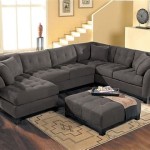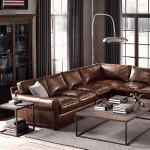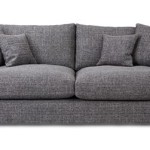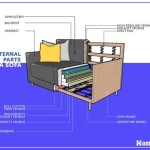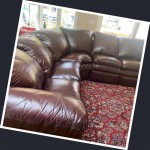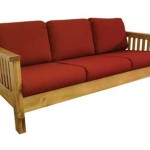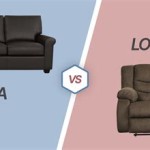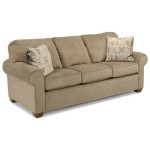What To Put Under Sofa Feet: A Comprehensive Guide
Protecting flooring and ensuring sofa stability are primary concerns for homeowners. Selecting appropriate materials to place under sofa feet can mitigate these issues, preventing scratches, dents, and unwanted movement. This article explores a variety of options for under-sofa foot protection, outlining their benefits, drawbacks, and appropriate use cases.
The choice of what to place under sofa feet is not a one-size-fits-all solution. It depends on several factors: the type of flooring (hardwood, laminate, tile, carpet), the sofa's weight and leg construction, and the aesthetic preferences of the homeowner. Understanding these elements is crucial for making an informed decision.
Felt Pads: A Versatile and Affordable Solution
Felt pads are among the most common and readily available solutions for protecting floors from furniture. These pads, typically made from synthetic or natural felt, adhere to the bottom of sofa feet using an adhesive backing. They provide a soft barrier between the furniture and the floor, preventing scratches and reducing noise when the sofa is moved.
The advantages of felt pads are numerous. They are inexpensive, easy to install, and come in various shapes and sizes to accommodate different sofa leg designs. They are suitable for hardwood, laminate, and tile floors. Furthermore, felt pads offer a low-profile solution that is often visually unobtrusive.
However, felt pads also have limitations. The adhesive can weaken over time, causing the pads to detach. This is particularly true with heavier sofas or on surfaces that are frequently cleaned with chemical solutions. Detached felt pads can become a nuisance and may need to be replaced periodically. Felt pads can also accumulate dirt and debris, potentially scratching the floor if the adhesive is compromised.
For optimal performance, it is recommended to clean the sofa feet thoroughly before applying felt pads. Using a strong adhesive, such as a construction adhesive, can improve the longevity of the attachment. Regular inspection and replacement of worn or detached pads are essential to maintain floor protection.
Hard Rubber Pads: Durable and Gripping
Hard rubber pads offer a more robust alternative to felt pads. These pads are typically made of dense rubber and are designed to provide a secure grip on the floor, preventing the sofa from sliding. They are particularly useful on smooth surfaces like tile or polished concrete, where furniture tends to move easily.
The primary benefit of hard rubber pads is their durability. They are resistant to wear and tear and can withstand the weight of heavy sofas without compressing or losing their shape. The rubber material also provides excellent shock absorption, reducing noise and vibration.
Hard rubber pads, however, may not be suitable for all types of flooring. They can leave marks or indentations on softer surfaces like vinyl or linoleum. Furthermore, the dark color of many rubber pads may be aesthetically unappealing to some homeowners. It's also important to select pads that are the correct size for the sofa feet; pads that are too small may not provide adequate support, while pads that are too large can be visually distracting.
Some rubber pads are designed with a textured surface to enhance their grip. Others feature a recessed area to accommodate different sofa leg shapes. When selecting hard rubber pads, it is important to consider the specific characteristics of the flooring and the sofa's design.
Furniture Cups: Protecting Against Indentations
Furniture cups are designed to distribute the weight of the sofa across a larger surface area, preventing indentations on carpet or hardwood floors. These cups are typically made of plastic, rubber, or metal and feature a recessed area to hold the sofa foot securely.
Furniture cups are particularly useful for heavy sofas or those with narrow legs that exert a concentrated load on the floor. By spreading the weight, they reduce the risk of permanent damage to the flooring material. They are also effective at preventing carpet fibers from being crushed or matted under the sofa legs.
The choice of material for furniture cups depends on the type of flooring. Plastic cups are suitable for carpeted floors, while rubber or felt-lined cups are recommended for hardwood or tile. Metal cups offer a more durable and aesthetically pleasing option, but they may be more expensive.
One potential drawback of furniture cups is their visibility. They are generally more noticeable than felt or rubber pads, which can detract from the overall appearance of the room. However, some furniture cups are designed to blend in with the flooring or furniture, minimizing their visual impact.
Carpet Grippers: Preventing Movement on Carpet
For sofas placed on carpet, carpet grippers provide an effective solution for preventing unwanted movement. These grippers typically consist of a layer of adhesive on one side that attaches to the sofa foot and a textured surface on the other side that grips the carpet fibers.
Carpet grippers prevent the sofa from sliding or shifting, which can be particularly problematic on thick or plush carpets. They also help to maintain the sofa's position and prevent it from damaging the carpet. Some carpet grippers are designed with a low profile to minimize their visibility, while others are more substantial and offer additional cushioning.
The effectiveness of carpet grippers depends on the type of carpet and the weight of the sofa. On low-pile carpets, grippers with a strong adhesive and a textured surface are typically sufficient. On high-pile carpets, grippers with a thicker profile and a more aggressive grip may be necessary.
One potential issue with carpet grippers is that they can leave residue on the carpet when removed. This is more likely to occur with low-quality grippers or those that have been in place for a long time. To minimize the risk of residue, it is recommended to use high-quality carpet grippers and to replace them periodically.
Levelers: Addressing Uneven Floors
In cases where the floor is uneven, levelers can be used to stabilize the sofa and prevent it from rocking or wobbling. Levelers are adjustable feet that can be screwed into the bottom of the sofa legs, allowing the height of each leg to be adjusted independently.
Levelers are particularly useful for older homes with floors that have settled or for rooms with uneven subfloors. They can also be used to compensate for slight variations in the height of the sofa legs themselves. By adjusting the levelers, it is possible to ensure that the sofa sits flat and stable, even on an uneven surface.
Levelers are typically made of metal or plastic and come in various sizes and styles. Some levelers are designed to be concealed beneath the sofa legs, while others are more visible and can add a decorative touch. When selecting levelers, it is important to consider the weight capacity of the sofa and the range of adjustment required.
Installing levelers typically requires drilling pilot holes in the bottom of the sofa legs. It is important to use the correct size drill bit and to avoid over-tightening the screws, which can damage the legs. Once the levelers are installed, they can be adjusted using a wrench or pliers until the sofa is level.
DIY Solutions: Utilizing Everyday Materials
In addition to commercially available products, several DIY solutions can be used to protect floors from sofa feet. These solutions typically involve repurposing everyday materials to create a protective barrier between the furniture and the floor.
One common DIY solution is to use scraps of fabric or felt. These materials can be cut into squares or circles and attached to the bottom of the sofa feet using glue or tape. Fabric or felt provides a soft cushioning effect that can prevent scratches and reduce noise.
Another DIY solution is to use cork coasters. Cork is a naturally resilient material that provides excellent grip and protection. Cork coasters can be glued or taped to the bottom of the sofa feet, or they can simply be placed underneath without any adhesive.
Rubber jar openers can also be used as makeshift furniture pads. These openers provide a non-slip surface that prevents the sofa from sliding. They are also relatively durable and can withstand the weight of heavy furniture.
While DIY solutions can be cost-effective, they may not be as durable or aesthetically pleasing as commercially available products. It is important to choose materials that are appropriate for the type of flooring and the weight of the sofa.
Considerations for Different Flooring Types
The type of flooring is a critical factor in determining what to put under sofa feet. Different flooring materials require different types of protection.
For hardwood floors, felt pads, rubber pads, or furniture cups with felt linings are generally recommended. These materials provide a soft barrier that prevents scratches and dents. It is important to avoid using hard plastic or metal pads directly on hardwood floors, as these materials can cause damage.
For laminate floors, similar protection is needed as with hardwood. Felt pads, rubber pads, or furniture cups are suitable choices. Be wary of certain rubber compounds that might react with the laminate finish.
For tile floors, rubber pads or furniture cups with rubber linings are often the best option. These materials provide a secure grip and prevent the sofa from sliding. Felt pads may also be used, but they may need to be replaced more frequently due to wear and tear.
For carpeted floors, carpet grippers or furniture cups with a wide base are recommended. These materials prevent the sofa from sinking into the carpet and provide stability. Felt pads are less effective on carpet, as they can become embedded in the fibers.
Choosing the appropriate material for the specific flooring type is crucial for ensuring long-term protection and preventing costly repairs.

Should A Rug Go Under Sofa The Establishment

Under Couch Blocker Toy Blockers For Furniture 9 8 Feet Adjustable Bumper Bed Filler Stopper Sofa Dog Com

How To Slide A Rug Under Sectional Sofa

Under Couch Blocker Toy Blockers For Furniture 9 8 Feet Adjustable Bumper Bed Filler Stopper Sofa Dog Com

Should A Rug Go Under Sofa The Establishment

Under Sofa Toy Blocker Adjustable Bumper Sectional Connectors For Sliding Sofas Guard Avoid Things Couch Furniture Include Adhesive Mounting Strap Temu

Under Sofa Toy Blocker Adjustable Bumper Sectional Connectors For Sliding Sofas Guard Avoid Things Couch Furniture Include Adhesive Mounting Strap Temu

Should A Rug Go Under Sofa The Establishment

Toy Blockers For Furniture Prevent Things From Going Under Sofa Couch Bed And Other Easy To Install Remove 9 8 Feet Com

Why Did You Leave Small Pieces Of Plastic Under My Furniture Legs Amazingly Clean Carpet

